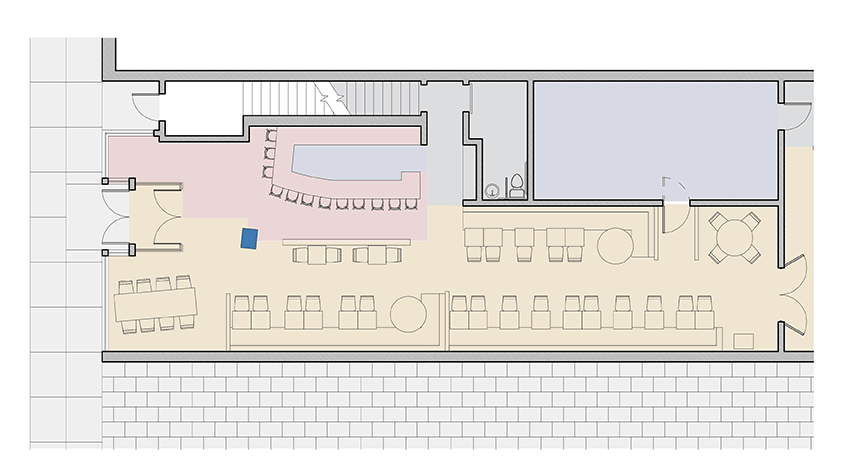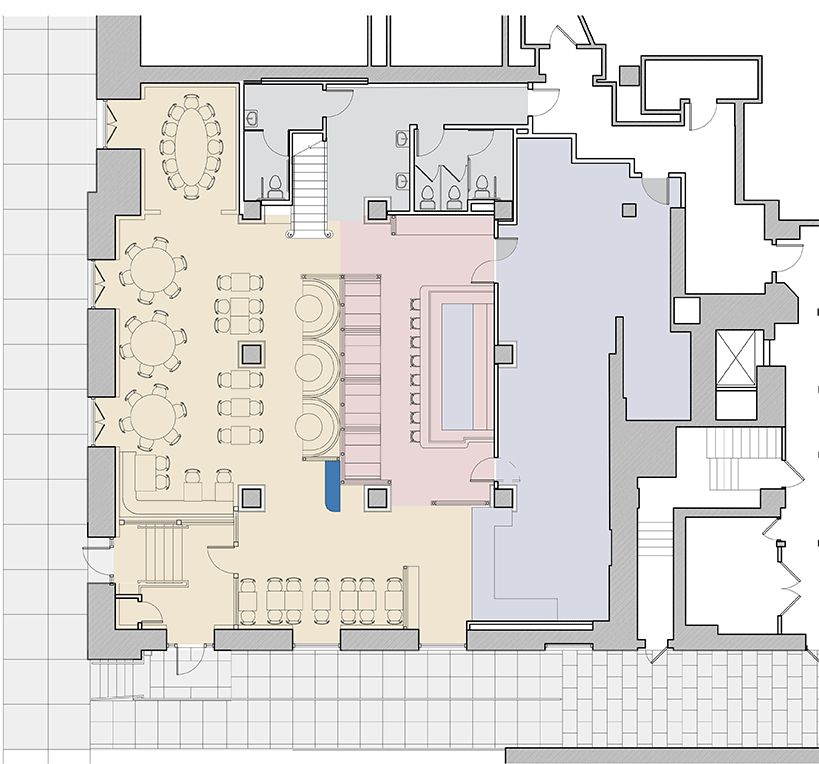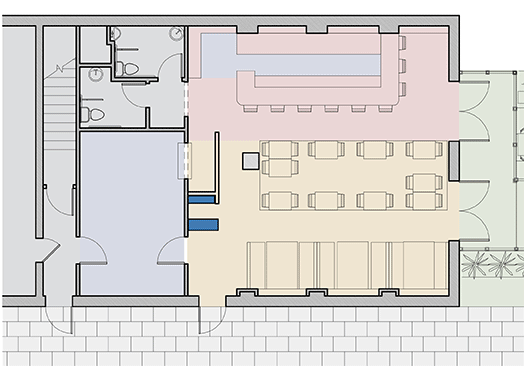On June 17, restaurants in Connecticut were allowed to reopen for indoor dining after having been shut down due to the coronavirus pandemic. In order to comply with state guidelines, restaurants should take the actions outlined below. This is in addition to recommendations for outside dining in our blog How to Adjust Your Restaurant Layout for COVID-19 Restrictions.
The guidelines can be grouped into five focus areas that address:
Layout issues
- Entrances/Exits
- Capacity
Other considerations
- Administration
- Setup Changes
- Sanitation
Entrances/Exits
Keeping patrons as far away from one another as possible is key to reopening successfully and remaining open. For example, the state suggests that restaurants consider an exit from the facility that is separate from the entrance to allow for one-way foot traffic.
The guidelines also call for posting clear signage to explain new policies such as social distancing protocols, the fact that customers should not enter if they have symptoms related to COVID-19, cleaning and disinfection practices, face mask and glove requirements for staff, and the instruction that employees stay at home if they are ill.
Another directive is to close indoor waiting rooms to keep people from congregating. You should also install visual social distancing markers to encourage customers to remain six feet apart. That includes at the restaurant entrance and when in line to be seated, pay their bill, or use the restroom.

In this urban eatery, a traffic pattern from front to back established one-way flow for customers. Staff is encouraged not to cross paths with customers. Occupancy is reduced to 50% of maximum. Barriers are added in areas to keep both customers and staff safe from neighboring customers while seated. Hand sanitizers are located on each table. Masks are required to enter and can be taken off while seated.
Capacity
This guidance covers how many patrons are allowed to dine at the same time. In particular, Phase II of reopening restricts indoor dining capacity to 50% of the pre-pandemic maximum. Outdoor dining is still encouraged as long as the restaurant doesn’t exceed its regular operating capacity and physical distancing can be maintained.
In addition, if a restaurant implemented extra outdoor dining capacity during Phase I, that additional seating can remain if the municipality continues to approve it. It’s important to note that business owners are responsible for enforcing the revised capacity limits.

Adjustments in this larger restaurant include establishing entry and exit doors (with exceptions for wheelchair accessibility), one-way circulation paths for patrons and staff, reduced occupany and moving tables for better distancing, Where barriers do not already exist, such as at the bar, adding a plexiglass barrier to protect both patrons and staff. Patrons are escorted to and from their tables.
Administration
These directives have to do with how you run your business. They include that you must train employees on new protocols related to COVID-19, including cleaning processes and how to use cleaning products such as disinfectants safely and effectively. The state guidelines require that the training be provided at no cost to the employee and during working hours. In addition, the training must be presented in the language and at the literacy level of the employees, and weekly policy refreshers must be provided.
In terms of staffing, schedules should be modified to limit exposure. Specifically, you should stagger shift start/stop times and break times to minimize contact across employees. Restaurant owners should also consider keeping the same shift schedules and avoiding mixing staff across shifts. In addition, it is important to keep track of when employees are on-site, as maintaining a log simplifies contact tracing.
Restaurants can complete a self-certification on the DECD website to receive a Reopen CT badge. This badge can be displayed on-site and also on social media to advertise adherence to the state rules, which can help build customer confidence.

In this casual eatery, patrons are welcomed at the door and escorted to their table via one-way circulation markers on the floor. Tables and chairs are removed to create a loop of circulation and to ensure a maximum of 50% occupancy. Barriers are added in key locations. Patrons leave out the back door to the adjacent side walk.
Setup Changes
The state requires that restaurants make certain setup changes in preparation for reopening. For instance, you should close or remove non-essential amenities (e.g., dance floor, pool table, etc.).
You’re also strongly encouraged to use no-touch or disposable options for menus such as a phone app or whiteboard. If those options are not practical, you must sanitize menus between uses. Also, utensils should be rolled or packaged and single-serving condiment packets or containers must be used.
Wherever possible, you should install touchless appliances. This includes things like contactless payment systems, paper towel dispensers, soap dispensers, trash cans, etc.
Sanitation
Sanitation guidelines are intended to ensure that your restaurant is as clean as possible. The guidelines call for developing cleaning checklists that incorporate these rules and ensuring that it is clear which employees are responsible for implementing the plans.
Restaurants must also complete a thorough cleaning of their facility prior to reopening. Areas to address include dining, kitchen, bathroom, and seating areas, and any commonly touched surfaces like doorknobs and handrails.
Leverage Insights from a Firm with Restaurant Expertise
A great way to reopen to indoor dining safely and effectively is to get input from an architecture firm with expertise in restaurant design and layout. Our team excels in this area and is fully up to speed on Connecticut’s reopening guidelines.
If you have questions about how your restaurant should resume operations, please contact us at your convenience. You can also check out projects we’ve completed and our portfolio of architectural design services online.
